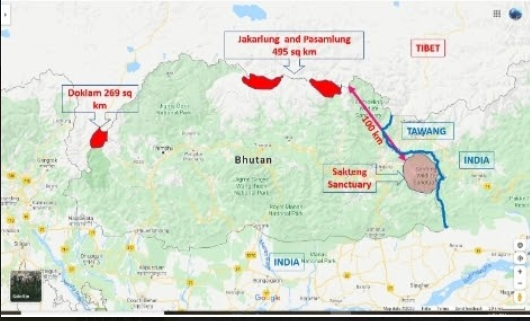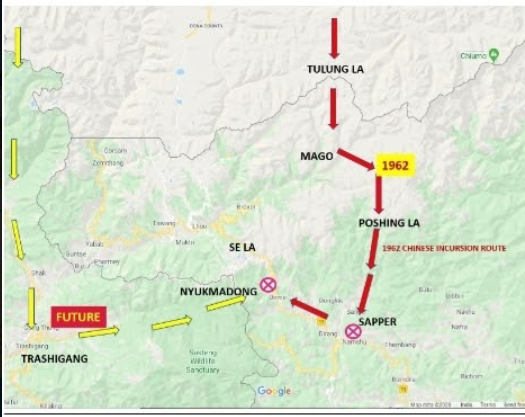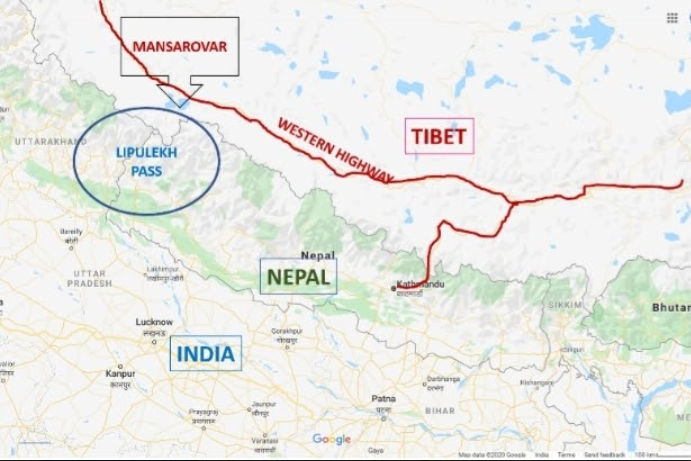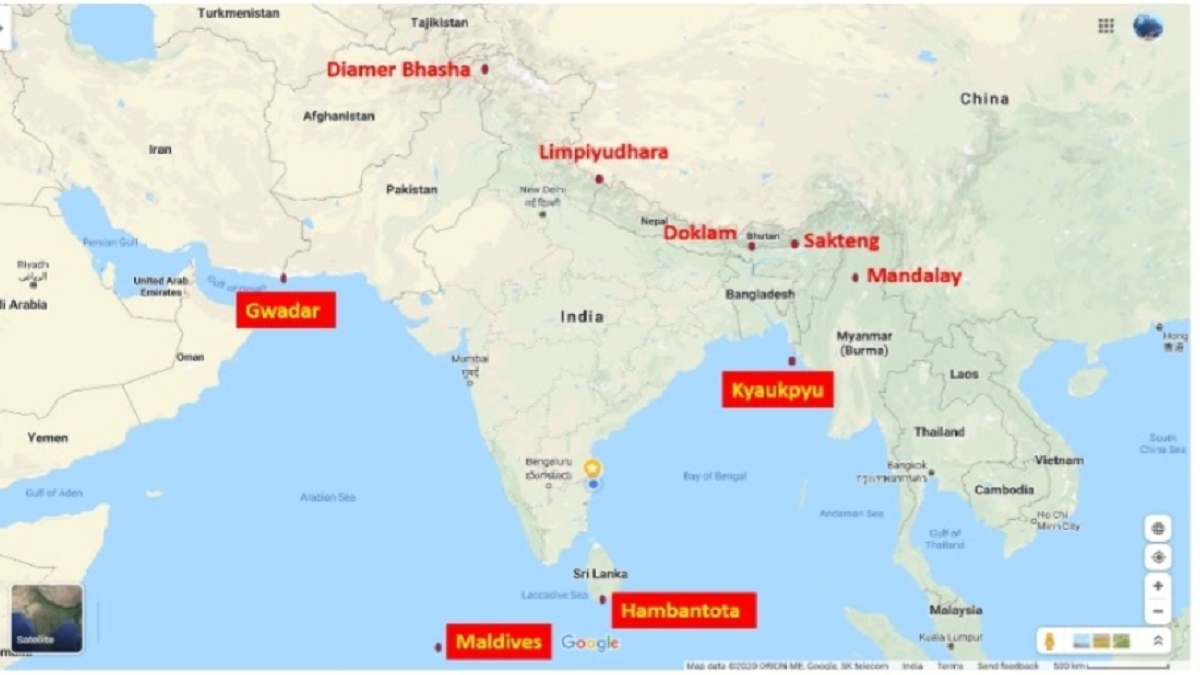Earlier, I had written that the Chinese will start talking peace once the odds are against them. The standoffs had only two outcomes. They end at a table and China withdraws to resume as an unmanned LAC, or we end up with a manned LAC. We are heading generally in that direction.
China tried to force its way in Doklam. It was surprised by our reaction. A face-saving exit was given. The larger message was that it can be blocked. China did not forget the sleight. This time it came with an elaborate plan which backfired. Geopolitically China stands isolated. Strategically, Sino-Indian relations have chilled. Another generation will be in the “Hindi Chini Bye Bye” mode. China’s untrustworthiness has spurred and motivated India to take a shot at global leadership. It landed itself in an avoidable two-front situation and has driven the India-US relationship closer. Tactically, Chinese were caught out in Galwan and suffered casualties which they cannot declare. Their Navy could not get a sniff at the IOR. There are going to be economic ramifications. ‘Loss of Face’ will emerge. All this will reflect in their aggressive behaviour hence forth. Having been stymied twice, they will have learned a lesson — never head butt India.


Search for alternatives
China’s blind aim is to be a superpower. It must prove its superiority over India first to have a sniff at that. PLA cannot overwhelm India across the Himalayas. PLAN does not have the capability to poke out beyond the South China Sea. Political, economic, and diplomatic reverses will not matter much. Cyberspace, information/ influence operations have their limitations. China will get back at us militarily. If the direct route is no more an option, then it must be the insidious route.
China has realised that force does not work against India. It has already changed tack and is making insidiously indirect moves. To become a superpower, China must show India down decisively in the next confrontation. It must also ensure that India stays fixated on the Tibetan Border. This ensures that the Indian Navy does not expand to hinder it in the IOR. Economic and BRI revival are critical to superpower ambitions. These are presaged by the fact that China must have freedom of maneuver and a degree of domination in the Indo Pacific region.
So, what are the indirect routes? A multi-directional and multifaceted threat manifesting through Pakistan, Nepal, Bhutan, Myanmar, and Sri Lanka. Each country gives an option to pose a different challenge for India. The main issue is that each country allows China to militarily threaten us at our doorstep without a fight to embarrass the Indian armed forces at least cost.

Insidious, indirect routes Bhutan:
Existing territorial disputes between Bhutan and China were in the Western and middle sectors at Doklam, Jakarlung and Pasamlung. In its latest gambit, China has laid claim on the Sakteng sanctuary. It is 100 km deep into Bhutan. It is contiguous to the Tawang Tract. Chinese will claim it as part of South Tibet based on manufactured facts. One way of looking at it is that Sakteng comes into play only when the Tawang Tract is ceded to China. The other way to look at it is that Sakteng turns Tawang defences. If China overwhelms Bhutan and forces its way to Sakteng through Trashigang, then it is knocking at Nyukamdung, Dirang and Sapper. This is a mirror of what happened in 1962. A combination of Doklam and Sakteng poses severe military threats to India.

Nepal: While India-Nepal ties have gone downhill, Sino Nepal ties have gone uphill. Successive communist governments in Nepal have gravitated to China. Presently, China has almost complete sway on Nepalese politics. It is abundantly clear that the Lipulekh Pass issue was synced by China through Nepal. With China increasing its footprint in Nepal, enhanced military cooperation and joint action should not be ruled out. A minimalistic Sino — Nepalese threat is to the Lipulekh Pass. China could assist Nepal to grab their claimed areas along the Limpiyudhara. In a maximalist threat the Chinese could be given passage by Nepal to appear along the Terai region. The Insidious part is that Nepal can create trouble in the Terai region to destabilise India.
Myanmar: China is seeking to push through the ChinaMyanmar Economic Corridor. The project envisages road and rail connectivity between Kunming and Kyaukpyu via Mandalay. It involves the multi-billiondollar deep seaport in Kyaukpyu which gives China a strategic opening on to the Bay of Bengal and eastern part of Indian Ocean Region. Myanmar has so far not fallen into the debt trap. To pressurise and destabilise Myanmar, China has recently started arming rebel groups. Myanmar’s Senior General Min Aung Hlaing has sought international help to ward off the threat. If this call is not heeded, China will expand its operations. This is harking back to the 1960s/1970s when Naga insurgency was fomented by China. It can also pose a direct military threat from the East circumventing the Himalayas. Such an option enables direct air and logistics support to any offensive from the mainland.
Pakistan: A new dimension of Sino Pak relations is surfacing. The Pakistan Army and a Chinese company have entered a 30-70 funding agreement for the Diamer Bhasha Dam project in Gilgit Baltistan. It is unique. The Pakistan Army is funding the project and not the Government. The supra national role of the Pakistan Army is now official. It would be fair to assume that such an equation will come forth in converting Gwadar into a Chinese Naval Base. This has implications. Pakistan is immersed in debt to China which it cannot repay. Pakistani sovereignty is hereafter compromised permanently. It is already a vassal state of China with large pockets owned by the latter. As a result, Pakistan Army will do China’s bidding against India. Hence the future Chinese threat from the west will not be a Pakistani one but a Chinese one.
Sri Lanka & Maldives: China has already debt trapped Sri Lanka and has a 99-year lease on the Hambantota Port. As Sri Lanka gets into a greater debt trap, its sovereignty will erode further. Hence its ability to resist China in conversion of Hambantota into a naval base will weaken with time or with a change in Sri Lankan politics. In the same breath a similar scenario could unfold in Maldives. China could end up with two naval bases in the guts of the Indian Ocean.

Overall scenario
A look at the map indicates that in the future China is creating multiple options of manifesting a land-based threat from POK, Limpiyudhara, Doklam, Sakteng or Mandalay. Recent Chinese moves are insidious and clear pointers to the future. A naval threat could also emanate from Gwadar, Hambantota, Maldives and Kyaukpyu. These threats could be projected through the PLA, Pakistan Army and/or in conjunction with forces of countries (willing or unwillingly). This is in addition to a threat which PLA can directly pose along the LAC. While some of these threats lack credibility presently, China is very clearly moving towards making it so. The options available to China will multiply in future. The naval threat was always visualized in some form. However the potency of the land-based threats is rising fast and clearly visible. It will be foolish to ignore it. After all, even in the current crisis, China did play the Pakistan and Nepal card unambiguously. It is not necessary to play all cards. A couple of direct and a couple of indirect options will imbalance us.
Response options
It would be an understatement to say that our diplomatic, political, economic, and military responses need to be multifaceted. Each neighbour needs a separate approach. It is to our overall discredit that we have let things come to this state. While Pakistan might be a lost cause we have to take steps to retrieve the situation in other countries. There is a strong case to rework defense arrangements with Bhutan and Myanmar. In the case of Sri Lanka and Maldives, the effort must be to control damage and ensure that democratic forces survive. Nepal needs an urgent political solution to rectify matters. We should also not lose sight of Bangladesh, which is seeing increased Chinese investment and dependence. In all cases we need to see how our armed forces can enhance defense and other cooperation with these countries less Pakistan. I remember Mark Tully once remarking that India being the biggest country in this region, needs to be more magnanimous with its neighbours.
Capability development needs to focus not only in thwarting the direct threat from the Chinese but as to how to contend a military threat developing through third party countries as also strengthening them. It is not always necessary to think of conventional methods. Asymmetric options need to be developed.
Importantly, in my opinion, it is time for us to take this contest across the LAC. For far too long, we have appeased China and let it do what it wants to do. India must seriously start exploring possibilities to put China on the back foot in Tibet, Xinjiang, Hong Kong and Taiwan. It is also time to take political steps towards POK, Gilgit, Baltistan, Baluchistan and the Durand line. India cannot be supine in the wait, watch and react mode, while China and Pakistan make merry. As a first step, can India claim the Mansarovar area with the same religious logic that Tawang is claimed as South Tibet? Let us take the battle into China’s court. There are plenty of options outlined in an earlier article; it just needs clear headed political determination to execute them.
Lt Gen P.R. Shankar was India’s DG Artillery. He is highly decorated and qualified with vast operational experience. He contributed significantly to the modernisation and indigenisation of Artillery. He is now a Professor in the Aerospace Dept of IIT Madras and is involved in applied research for defence technology. His other articles can be read on www. gunnersshot.com

